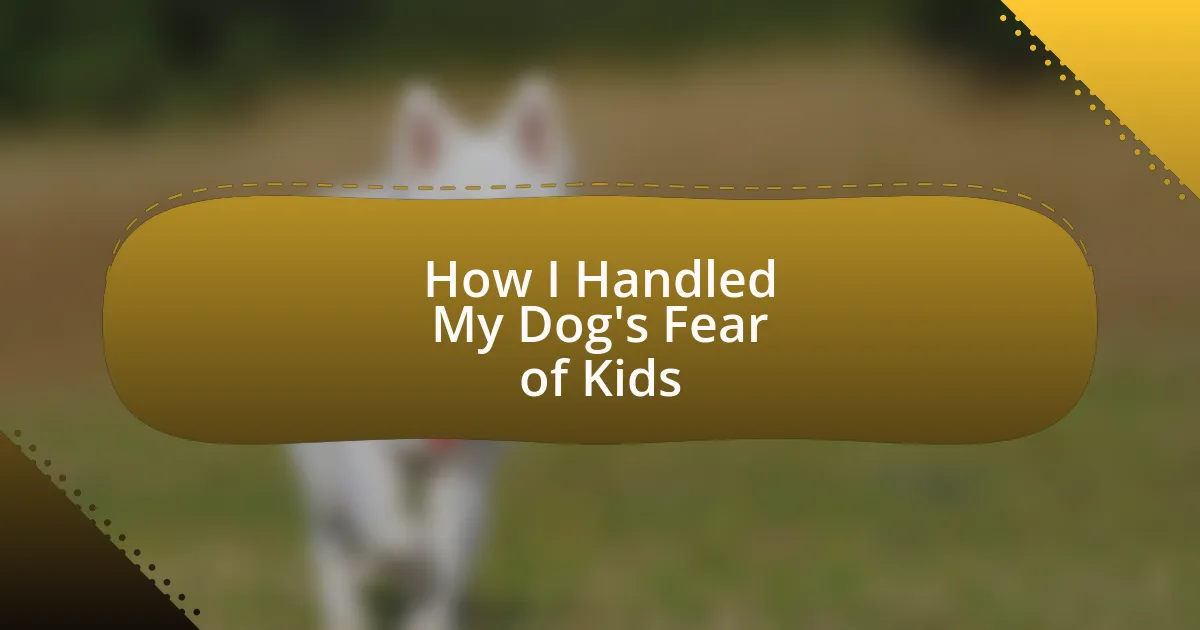Key takeaways:
- Understanding dog behavior books can enhance the bond between owners and their dogs by revealing insights into canine emotions and communication.
- Common dog fears, such as loud noises and unfamiliar people, often stem from past experiences and can be addressed through owner awareness and education.
- Gradual desensitization and positive reinforcement are effective techniques for helping dogs overcome their fears, promoting healthier interactions with their environment.
- Creating a safe space for dogs can greatly improve their comfort levels and confidence when faced with anxiety-inducing situations.
Author: Clara Ashford
Bio: Clara Ashford is an acclaimed author known for her evocative storytelling and richly drawn characters. With a background in psychology and literature, she weaves complex narratives that explore the human experience and emotional depth. Her debut novel, Whispers in the Wind, captivated readers and critics alike, earning her a place among contemporary voices in fiction. Clara resides in the Pacific Northwest, where the lush landscapes inspire her writing. When she’s not crafting her next tale, she enjoys hiking, painting, and engaging with her vibrant community of fellow writers.
Understanding dog behavior books
Understanding dog behavior books can be a revealing experience for any dog owner. I remember picking up my first book filled with insights on canine psychology. It was as if a light bulb went off; I began to see the world from my dog’s perspective and realized that his fear of kids stemmed from past experiences he had never shared.
These books often delve into the intricacies of why dogs behave the way they do. Have you ever wondered what your dog might be trying to communicate through their body language? I found that paying attention to these subtle signals not only improved my connection with my dog but also helped me address his fears more effectively.
Moreover, dog behavior books equip us with valuable strategies for transforming negative behaviors into positive experiences. When I first started implementing some of the techniques I read about, I was surprised at how quickly my dog began to trust children. It made me reflect on the power of knowledge and how understanding canine behavior can lead to a more harmonious life for both dogs and their human companions.
Common fears dogs experience
Many dogs experience common fears that can stem from various sources, including loud noises or unfamiliar people and situations. For example, I had a friend whose dog would tremble at the sound of thunder, hiding under the coffee table as if it were a safe fortress. Have you noticed how certain sounds can make your dog react in surprising ways? It’s a reminder of how sensitive they are to their environment.
Another prevalent fear is the anxiety around children, which can be linked to a dog’s lack of exposure or negative past encounters. I remember my dog, who would often retreat to his bed at the mere sound of children’s laughter. Initially, I was perplexed by this behavior, but as I reflected on his past, it became clear that a chaotic incident during his puppy training had left a lasting impression. It made me realize how critical our role is in shaping their experiences.
Some dogs may also be fearful of specific objects or movements, like brooms or vacuum cleaners, which can seem harmless to us. I encountered this with my dog when he would bark frantically at our vacuum, as if it were an alien invader. Observing his reactions taught me just how vital our understanding of their fears can be—not only for building confidence but also for fostering a sense of security in their daily lives.
Techniques I learned in books
One technique I found particularly useful in books was the concept of gradual desensitization. It reminds me of the time I carefully introduced my dog to a friend’s child. I started with a safe distance, allowing him to observe without pressure, and over several meetings, we slowly decreased that distance. Watching his anxious body language transform into curiosity was heartwarming and reinforced the lesson that patience pays off.
Another valuable strategy I gleaned from my readings was using positive reinforcement. There was an instance when I tossed treats when my dog encountered children in the park. The look of surprise on his face turned into one of anticipation, helping him associate kids with good things. Have you ever seen that shift in behavior when they realize something once scary can actually bring joy?
Finally, I learned about creating a safe space for my dog. There were days when my pup would just need to retreat when kids were around. By setting up a cozy area in our home filled with his favorite toys and a calming blanket, I noticed he felt secure enough to observe from a distance. Isn’t it amazing how a little understanding of their needs can make such a difference in their confidence?

Leave a Reply